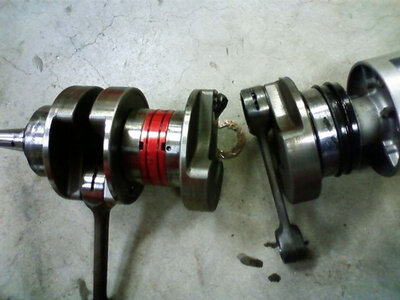I would still like to hear your take on this if you ever get time. Thanks
Sorry, forgot all about this.
DASA recommends all of our rec engines to have the top ends INSPECTED every 50 hours and the bottom ends every 100 hours.
Race engines about 35 on the top and 75 on the bottom.
Now I want to stress this is for INSPECTION only.
Dan says 7500 RPM is safe for the 16MM engine in short bursts and 6500 RPMS will still be OK for WOT runs. WOT is not really applicable for freestyle, but nonetheless.
I love some of the threads and replies in threads about people who don't take care of their stuff and blame parts for failures due to their lack of maintainance. "Stroker crank reliability" threads and such. Almost laughable threads sometimes, the people with bad "experience" ruin it for the other guys looking to step up to a bigger motor, or worse, in my opinion, get talked into the stock stroke/90MM big-bore deal thinking it is a good idea.
I mean you are using an engine design that was designed for what, 60-65 HP and we are cranking 160-180 on the smaller setups to 200HP on the larger engines and you are complaining about reliability? Come on.
The GP engine design is a lightweight compact design, not like the GPR, complex Seadoo, or Polaris/ snowmobile hybrids. There is a simple reason why the design has lasted so long and why it is still the most popular.
The full billet 16MM engine(shortblock/long block whatever) is only 65lbs. A cast case billet cylinder 10-12MM stroker would be at least 5-7, maybe even 10 lbs less than that. Making at minimium 150HP.
I have 5 HARD seasons on a 10MM stroker 525 Banshee, with regular teardowns and keeping up on maintainance, it is still going.
Some of it is kinda got off the subject, but there is our answer....
Brian

